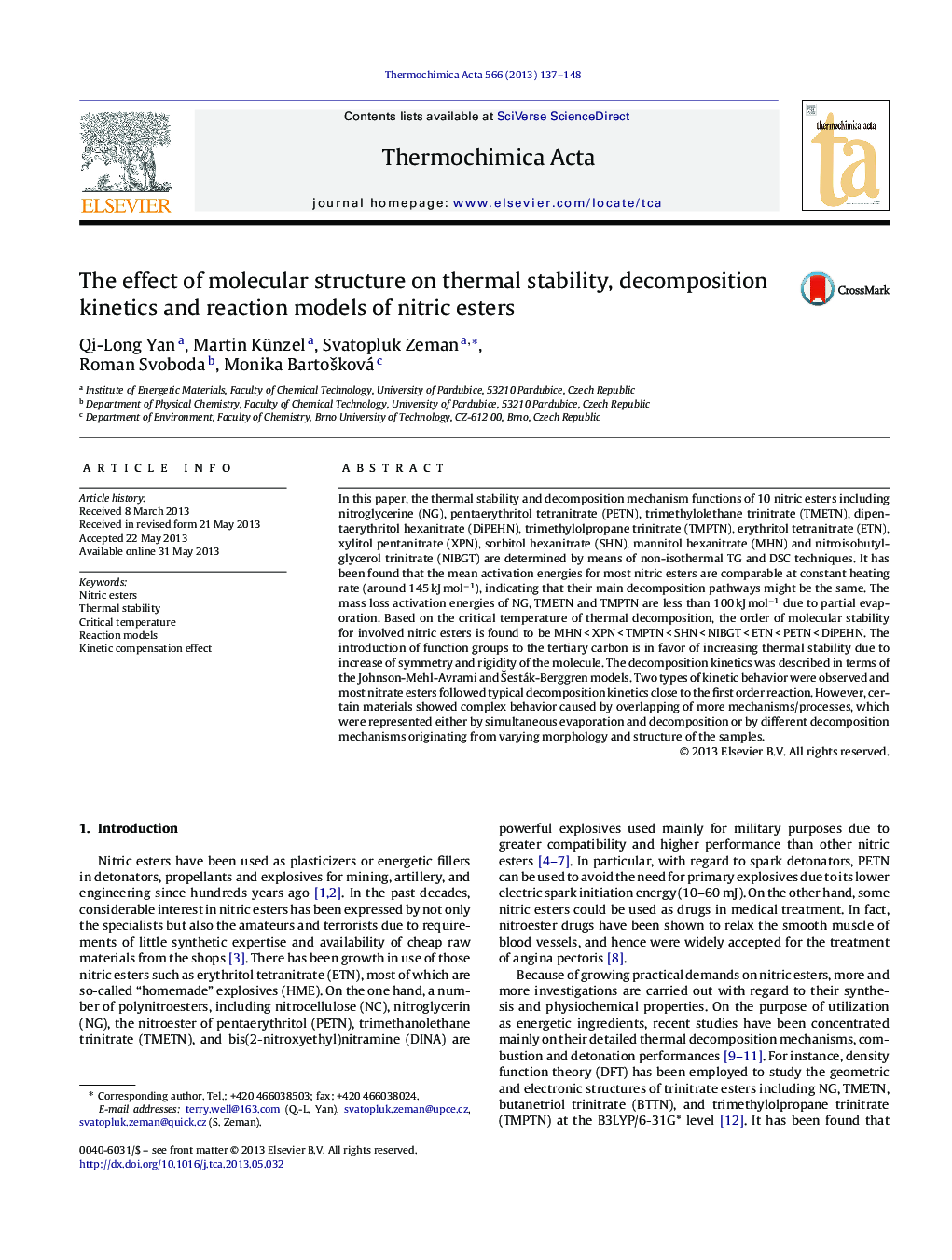| Article ID | Journal | Published Year | Pages | File Type |
|---|---|---|---|---|
| 673681 | Thermochimica Acta | 2013 | 12 Pages |
Abstract
In this paper, the thermal stability and decomposition mechanism functions of 10 nitric esters including nitroglycerine (NG), pentaerythritol tetranitrate (PETN), trimethylolethane trinitrate (TMETN), dipentaerythritol hexanitrate (DiPEHN), trimethylolpropane trinitrate (TMPTN), erythritol tetranitrate (ETN), xylitol pentanitrate (XPN), sorbitol hexanitrate (SHN), mannitol hexanitrate (MHN) and nitroisobutylglycerol trinitrate (NIBGT) are determined by means of non-isothermal TG and DSC techniques. It has been found that the mean activation energies for most nitric esters are comparable at constant heating rate (around 145Â kJÂ molâ1), indicating that their main decomposition pathways might be the same. The mass loss activation energies of NG, TMETN and TMPTN are less than 100Â kJÂ molâ1 due to partial evaporation. Based on the critical temperature of thermal decomposition, the order of molecular stability for involved nitric esters is found to be MHNÂ <Â XPNÂ <Â TMPTNÂ <Â SHNÂ <Â NIBGTÂ <Â ETNÂ <Â PETNÂ <Â DiPEHN. The introduction of function groups to the tertiary carbon is in favor of increasing thermal stability due to increase of symmetry and rigidity of the molecule. The decomposition kinetics was described in terms of the Johnson-Mehl-Avrami and Å esták-Berggren models. Two types of kinetic behavior were observed and most nitrate esters followed typical decomposition kinetics close to the first order reaction. However, certain materials showed complex behavior caused by overlapping of more mechanisms/processes, which were represented either by simultaneous evaporation and decomposition or by different decomposition mechanisms originating from varying morphology and structure of the samples.
Related Topics
Physical Sciences and Engineering
Chemical Engineering
Fluid Flow and Transfer Processes
Authors
Qi-Long Yan, Martin Künzel, Svatopluk Zeman, Roman Svoboda, Monika BartoÅ¡ková,
